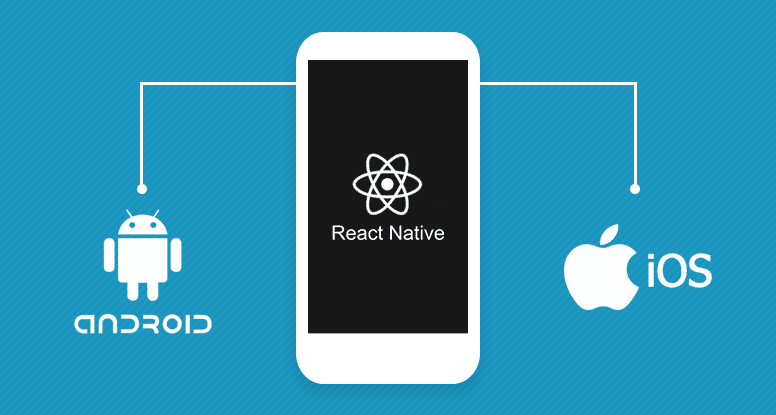Before diving headfirst into building your next big app, it’s essential to consider all the factors impacting the decision-making process. One such factor is whether you should choose React Native for building your mobile app, as there are several benefits associated with this technology and not many drawbacks, either. Use this guide to learn more about why you might want to build your mobile app using React Native.
Top Benefits of React Native For Mobile App Development
1) Save Time And Money By Using A Single Codebase
React Native is a framework that helps you build your mobile app using a single codebase in JavaScript. By choosing this framework, you’ll be able to save time and money by not having to learn multiple languages or deal with different programming environments. The framework has also been proven to provide a better user experience than its competitors, like Cordova, PhoneGap, and Ionic.
If the cross-platform capabilities are what you’re looking for, then React Native may be the best option. And if you’re a business owner looking to develop a customized app, this could be the right choice too! React Native’s popularity comes with an active community of developers that can offer support through open-source forums such as Stack Overflow and Facebook Groups.
In addition, an increasing number of tools are becoming available, which will help any developer complete the development process more quickly and effectively.
2) Easily Create A Native Look And Feel
React Native is a JavaScript framework that can build native mobile apps. It means that you can create an app that looks and feels like a native app without the need for iOS or Android development skills.
This cross-platform framework allows you to use your existing web development skills and apply them to build an excellent mobile app. Build your mobile app with just one codebase, meaning less time spent on testing and debugging your app and quicker deployment times. Spend more time focusing on the design and features of your app instead.
With React Native, you can provide your app with the following:
Consistent look across devices: With React Native’s ability to share components between platforms comes consistency among screens across devices, so if you have an iPhone version and an Android version, both will have the same UI.
Rapid Prototyping: React Native has excellent support for quickly getting up and running with prototypes because it provides a great environment for simple layouts. You’ll also get live reload support out of the box, making it easier to see your app’s appearance as soon as any changes are made.
3) Code once. Write Anywhere
React Native lets you write your app in JavaScript and use the same code to create native iOS or Android apps. This means you can focus on what makes your app unique and not worry about creating separate versions for each operating system. For example, suppose you are working with a video-sharing platform instead of building two different apps with two different features.
In that case, you would need to create one app using React Native with everything that is shared on social media. You would then just post a link to your video and have it work across all platforms without extra effort. In addition, the community behind React Native has been increasing and continues to innovate. All this leads to an experience where there’s no such thing as one size fits all regarding mobile development.
4) Get Near-Instant Feedback With Hot Reloading
React Native lets you get near-instant feedback with hot reloading. If you want an app that feels native but also has the benefits of cross-platform, then React Native is the way to go. With high performance and a developer experience on par with building web apps, React Native is here to stay.
Unlike other cross-platform tools, React Native isn’t a wrapper around a web view. Instead, it uses real native components—so your apps look and feel like they were made for each platform. They use native layouts, animations, and gestures. They even use real native components in place of UIKit or Android.
5) Build Performant And Scalable Apps
React Native apps are written in JavaScript, which makes them performant and scalable. Since they’re built with the same language as your web app, you can share code between platforms without rewriting it. Plus, it’s a cross-platform framework, so you can deploy your app on iOS and Android without having to write native code separately. It also comes with tools for animations, gestures, scrolling, and touch events. You can use open-source libraries such as Redux or MobX to make your application easier to maintain over time. The community is helpful, too: if you run into any issues or have questions about how something works, many online resources might help!
6) Use third-party Libraries With Ease
React Native is a JavaScript framework that allows developers to build cross-platform mobile apps using the same code and development environment. Popular React Native libraries include Facebook’s GraphQL and Relay, as well as Parse and Firebase.
With these libraries, you can easily use them in your app. They are not restricted or specific to one platform, which makes it easier for the developer. You can ensure each platform has its library.
Conclusion
React Native is an excellent technology for building your mobile app because it eliminates the need to learn Objective-C, Swift, Java, or Kotlin. It also lets you focus on what makes your app unique and different from others while saving time and money. The developer community is strong and continues to grow. The framework also offers a vast number of native modules with high-quality documentation. If you need customization, chances are there is already a module that will do just that.
So, hire React Native developers from OVE to build your next excellent mobile app. And if you need additional guidance, get in touch with us. We’re here to help and look forward to making your next great app!









